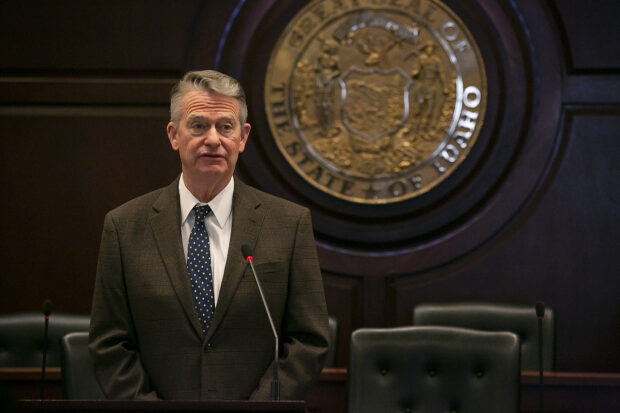State revenues fell almost $470 million, or 60 percent, short of projections for the month of April, according to a grim revenue report released Thursday by the Idaho Division of Financial Management.
The sharp drop occurred as Idahoans are largely staying home, many businesses are temporarily shuttered and the economy is in a freefall due to the coronavirus pandemic.
The revenue situation is a big deal for education because K-12 public schools are the state’s largest general fund expense each year. When higher education funding is factored in, you’re looking at about 60 percent of state spending.
Therefore, a decline in revenue is likely to affect funding available for education.
But state economists urged calm, saying they expect some of the revenue to come back in June. Gov. Brad Little extended the deadline to file and pay taxes from April 15 to June 15.
Traditionally, April is a huge revenue month for the state. Economists now hope June becomes that huge revenue month.

DFM Administrator Alex Adams is working under the theory that people who owe taxes (which would increase revenue) are waiting until the deadline to pay. The same theory holds that people who anticipated a refund (which would decrease revenue) would have already filed early wanting to get their money sooner.
“When I look at these numbers, I don’t see this as much of a loss of revenue as much I see it as a shift of revenue from April to June,” Adams said.
In recent telephone town hall meetings, Little explained that delaying Idaho’s tax deadline until June 15 — not July 15 like the feds did — was strategic. The delay gives Idahoans extra time to file and prepare for paying any taxes they owe. But pushing the deadline to June 15 keeps those payments in the current budget year, which ends June 30. Little has admitted that if he allowed Idahoans to wait to file until July, the state would not be able to meet the Idaho Constitution’s mandate to balance the budget.
Economists said they will know more in a month or two.
But there is already a potential rub. Tax refunds were down through April, with the state only issuing 43 percent of the refunds it forecast, Adams said. Historically, the state issues the bulk of its refunds in February, March and April.
It’s too early to say what’s going on, but if the number of refunds comes in below estimates, that could provide a financial boost for the state, because Idaho would pay out less in refunds.
But if people simply delayed filing altogether and will be due refunds when they do file by June 15, that could be a problem because the state would have to pay out more money at the very end of the budget year.
Again, state officials said they aren’t worrying. In fact, they’re hoping they made a mistake with the numbers and won’t have to pay out huge refunds as the state prepares to close the books on its 2019-20 budget year.
“We increasingly believe we may have overestimated the amount of refunds,” Adams said. “This, if true, would provide much-needed windfall of revenue at the end of the fiscal year.”

Weeks ago, Little already knew the revenue situation was going to be dicey. On March 27, he ordered across-the-board 1 percent holdbacks. That cut in spending by about $40 million, Adams said will give the state budget some breathing room. Because of the 1 percent holdback and because the Legislature originally planned for a $56 million end-of-year cash balance, Adams doesn’t think the state budget will run a deficit.
“We feel comfortable, based on the totality of what we are seeing, that we will fulfill the constitutional obligation of a balanced budget,” Adams said.
Nevertheless, we’re not out of the woods yet, even if the tax collection shift plays out and the 2020 budget holds up. All state agencies are bracing for another round of budget holdbacks of up to 5 percent after the 2020-21 fiscal year begins July 1.
And Adams warned that sales tax is a lagging indicator, and the impact of the pandemic likely hasn’t showed up in sales tax collections yet.
As Adams said, it will take a lot of toilet paper and bottled water sales to offset the sales tax lost over even one fewer car being sold.
